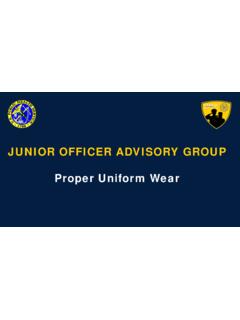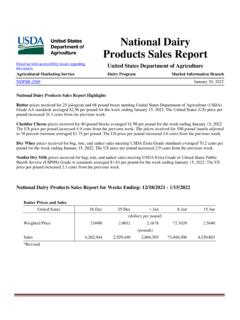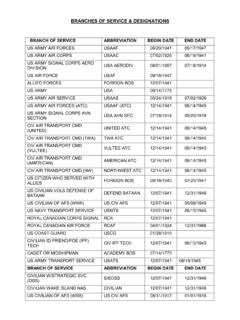Transcription of OSHA FACTSHEET HEPATITIS B VACCINATION …
1 Pathogens nor is there any chance of developingHBV from the vaccine. The vaccine must be administered according tothe recommendations of the public HealthService (USPHS) current at the time the proceduretakes place. To ensure immunity, it is importantfor individuals to complete the entire course ofvaccination contained in the USPHS great majority of those vaccinated will devel-op immunity to the HEPATITIS B virus. The vaccinecauses no harm to those who are already immuneor to those who may be HBV carriers. Althoughworkers may desire to have their blood tested for antibodies to see if VACCINATION is needed,employers cannot make such screening a conditionof receiving VACCINATION and employers are notrequired to provide must ensure that all occupationallyexposed workers are trained about the vaccineand VACCINATION , including efficacy, safety, methodof administration, and the benefits of also must be informed that the vaccine andvaccination are offered at no cost to the VACCINATION must be offered after the workeris trained and within 10 days of initial assignmentto a job where there is occupational exposure,unless the worker has previously received thevaccine series.
2 Antibody testing has revealed thatthe worker is immune, or the vaccine is contra-indicated for medical reasons. The employer mustobtain a written opinion from the licensed health -care professional within 15 days of the completionof the evaluation for VACCINATION . This writtenopinion is limited to whether HEPATITIS B vaccina-tion is indicated for the worker and if the workerhas received the workers who have reasonably anticipatedcontact with blood or OPIM during performanceof their jobs are considered to have occupationalexposure and to be at risk of being infected with HBV face a risk for liver ailments which can be fatal, including cirrhosis of the liver and primary liver cancer. A small percentage of adults who get HEPATITIS B neverfully recover and remain chronically infected.
3 Inaddition, infected individuals can spread the virusto others through contact with their blood andother body employer must develop an exposure controlplan and implement use of universal precautionsand control measures, such as engineering controls,work practice controls, and personal protectiveequipment to protect all workers with occupa-tional exposure. In addition, employers mustmake HEPATITIS B VACCINATION available to theseworkers. HEPATITIS B VACCINATION is recognized asan effective defense against HBV VACCINATION The standard requires employers to offer the VACCINATION series to all workers who have occupational exposure. Examples of workers who may have occupational exposure include,but are not limited to, healthcare workers, emergency responders, morticians, first-aid personnel, correctional officers and laundryworkers in hospitals and commercial laundriesthat service healthcare or public safety vaccine and VACCINATION must be offered atno cost to the worker and at a reasonable timeand place.
4 The HEPATITIS B VACCINATION is a non-infectious,vaccine prepared from recombinant yeast cultures,rather than human blood or plasma. There is norisk of contamination from other bloodborneFactSheetHepatitis B VACCINATION ProtectionHepatitis B virus (HBV) is a pathogenic microorganism that can cause potentially life-threatening disease in humans. HBV infection is transmitted through exposure toblood and other potentially infectious materials (OPIM), as defined in the OSHAB loodborne Pathogens standard, 29 CFR This is one in a series of informational fact sheets highlighting OSHA programs, policies or standards. It does not impose any new compliance requirements. For a comprehensive list of compliance requirements of OSHA standards or regulations, refer toTitle 29 of the Code of FederalRegulations.
5 This information will be made available to sensory-impaired individuals upon voice phone is (202) 693-1999; teletypewriter (TTY) number: (877) the VaccinationEmployers must ensure that workers who declinevaccination sign a declination form. The purposeof this is to encourage greater participation in thevaccination program by stating that a worker declin-ing the VACCINATION remains at risk of acquiringhepatitis B. The form also states that if a workerinitially declines to receive the vaccine, but at alater date decides to accept it, the employer isrequired to make it available, at no cost, providedthe worker is still occupationally exposed. Additional InformationFor more information, go to OSHA s BloodbornePathogens and Needlestick Prevention Safety andHealth Topics web page at: f i l e a c o m p l a i n t b y p h o n e , r e p o r t a n e m e r g e n c y,or get OSHA advice, assistance, or products, con-tact your nearest OSHA office under the of Labor listing in your phone book, orcall us toll-free at (800) 321-OSHA (6742).
6 Occupational Safetyand health 1-800-321-6742 For assistance, contact can help. It s 1/2011















